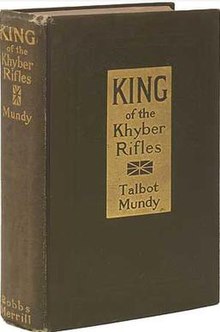
Sir Henry Rider Haggard was an English writer of adventure fiction romances set in exotic locations, predominantly Africa, and a pioneer of the lost world literary genre. He was also involved in land reform throughout the British Empire. His stories, situated at the lighter end of Victorian literature and including the eighteen Allan Quatermain stories, continue to be popular and influential.
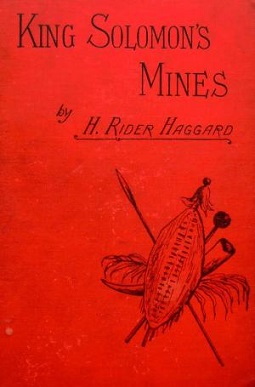
King Solomon's Mines (1885) is a popular novel by the English Victorian adventure writer and fabulist Sir H. Rider Haggard. It tells of an expedition through an unexplored region of Africa by a group of adventurers led by Allan Quatermain, searching for the missing brother of one of the party. It is one of the first English adventure novels set in Africa and is considered to be the genesis of the lost world literary genre. It is the first of fourteen novels and four short stories by Haggard about Allan Quatermain. Haggard dedicated this book to his childhood idol Sir Humphry Davy.
Michael Hammer is a fictional character created by the American author Mickey Spillane. Hammer debuted in the 1947 book I, the Jury. Hammer is a no-holds-barred private investigator whose love for his secretary Velda is outweighed only by his willingness to kill a killer. Hammer's best friend is Pat Chambers, Captain of NYPD Homicide. Hammer was a World War II army veteran who spent two years fighting jungle warfare in the Pacific Ocean theater of World War II against Japan.

Robert William Chambers was an American artist and fiction writer, best known for his book of short stories titled The King in Yellow, published in 1895.

The Prince and the Pauper is a novel by American author Mark Twain. It was first published in 1881 in Canada, before its 1882 publication in the United States. The novel represents Twain's first attempt at historical fiction. The plot concerns the ascension of nine-year-old Edward VI of England in 1547 and his interactions with look-alike Tom Canty, a London pauper who lives with his abusive, alcoholic father.

Bernard Cornwell is a British-American author of historical novels and a history of the Waterloo Campaign. He is best known for his novels about Napoleonic Wars rifleman Richard Sharpe. He has also written The Saxon Stories, a series of 13 novels about the making of England.

A Study in Scarlet is an 1887 detective novel by British writer Arthur Conan Doyle. The story marks the first appearance of Sherlock Holmes and Dr. Watson, who would become the most famous detective duo in English literature. The book's title derives from a speech given by Holmes, a consulting detective, to his friend and chronicler Watson on the nature of his work, in which he describes the story's murder investigation as his "study in scarlet": "There's the scarlet thread of murder running through the colourless skein of life, and our duty is to unravel it, and isolate it, and expose every inch of it."
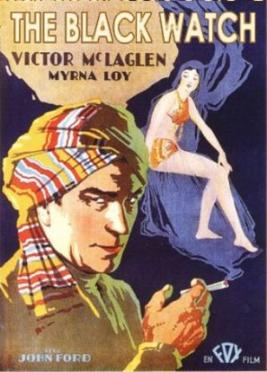
The Black Watch is a 1929 American Pre-Code adventure epic film directed by John Ford and starring Victor McLaglen, Myrna Loy, and David Torrence. It was written by James Kevin McGuinness and based on the 1916 novel King of the Khyber Rifles by Talbot Mundy. The film features an uncredited 21-year-old John Wayne working as an extra; he also worked in the arts and costume department for the film. This was director John Ford's first sound film.

Captain Blood: His Odyssey is an adventure novel by Rafael Sabatini, originally published in 1922.

The Dark Tower is a series of eight novels, one novella, and a children's book written by American author Stephen King. Incorporating themes from multiple genres, including dark fantasy, science fantasy, horror, and Western, it describes a "gunslinger" and his quest toward a tower, the nature of which is both physical and metaphorical. The series, and its use of the Dark Tower, expands upon Stephen King's multiverse and in doing so, links together many of his other novels.

The Afrīdī are an ethnically Afghan Pashtun tribe present day tribal areas in Khyber Pakhtunkhwa, Pakistan

Talbot Mundy was an English writer of adventure fiction. Based for most of his life in the United States, he also wrote under the pseudonym of Walter Galt. Best known as the author of King of the Khyber Rifles and the Jimgrim series, much of his work was published in pulp magazines.

Classics Illustrated is an American comic book/magazine series featuring adaptations of literary classics such as Les Misérables, Moby-Dick, Hamlet, and The Iliad. Created by Albert Kanter, the series began publication in 1941 and finished its first run in 1969, producing 169 issues. Following the series' demise, various companies reprinted its titles. Since then, the Classics Illustrated brand has been used to create new comic book adaptations. This series is different from the Great Illustrated Classics, which is an adaptation of the classics for young readers that includes illustrations, but is not in the comic book form.

Reginald Arkell was a British script writer and comic novelist who wrote many musical plays for the London theatre. The most popular of those was an adaptation of the spoof history book 1066 and All That: 1066—and all that: A Musical Comedy based on that Memorable History by Sellar and Yeatman. He was the author of A Cottage in the Country and the Green Fingers series of garden verse.
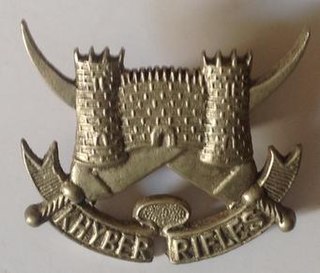
The Khyber Rifles are a paramilitary regiment, forming part of the Pakistani Frontier Corps Khyber Pakhtunkhwa (North). The Rifles are tasked with defending the border with Afghanistan and assisting with law enforcement in the districts adjacent to the border. Raised in the late nineteenth century, the regiment provided the title and setting for the widely read novel, King of the Khyber Rifles, and is the oldest regiment of the Corps. The regiment has a 2020/21 budget of Rs. 1.816 billion(1800 crore PKR) and is composed of seven battalion-sized wings.

Henry King was an American actor and film director. Widely considered one of the finest and most successful filmmakers of his era, King was nominated for two Academy Awards for Best Director and directed seven films nominated for the Academy Award for Best Picture.
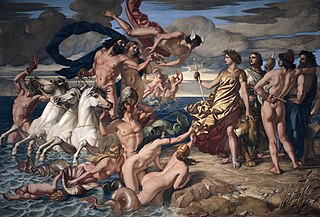
The British Empire has often been portrayed in fiction. Originally such works described the Empire because it was a contemporary part of life; nowadays fictional references are also frequently made in a steampunk context.
Moby-Dick is an 1851 novel by Herman Melville that describes the voyage of the whaleship Pequod, led by Captain Ahab, who leads his crew on a hunt for the whale Moby Dick. There have been a number of adaptations of Moby-Dick in various media.

King of the Khyber Rifles is a 1953 adventure film directed by Henry King and starring Tyrone Power and Terry Moore. The film shares its title but little else with the novel King of the Khyber Rifles (1916) by Talbot Mundy. This novel was also the basis for John Ford's The Black Watch (1929). The Khyber Pass scenes were shot in the Alabama Hills, Lone Pine, California. Released by 20th Century Fox, the film was one of the first shot in Technicolor CinemaScope.
Jules Verne's 1870 novel Twenty Thousand Leagues Under the Seas has been adapted and referenced in popular culture on numerous occasions.
